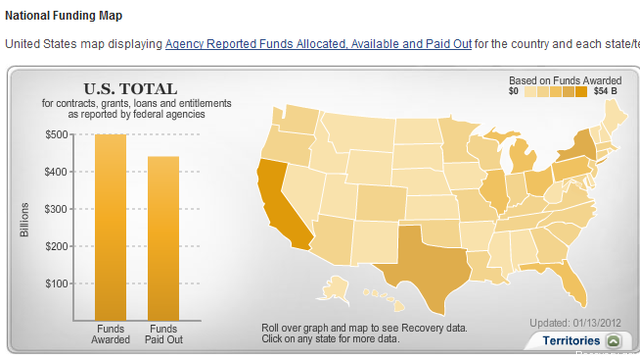 The combination of social media and transparency in federal spending adds up to boatloads of data. But what impact do these forces have on federal policy? Perhaps more to the point: Is policy driving change, or is change driving policy?
The combination of social media and transparency in federal spending adds up to boatloads of data. But what impact do these forces have on federal policy? Perhaps more to the point: Is policy driving change, or is change driving policy?
Social media experts John Crupi, chief technology officer for JackBe, and Gov20LA founder Alan Silberberg joined host Eric Kavanagh on the latest episode of Federal Spending — an online radio broadcast designed to follow the money, not the politics — to discuss how social media and the push for transparency are shaping government policy and process. Keep reading →

 The purpose of the
The purpose of the 
 Recovery.gov
Recovery.gov Whether the government’s $787 billion economic stimulus plan has actually worked may be the stuff of contentious political debate, but even partisans seem to agree that the processes and systems designed to track that money are helping to lay the foundation for better transparency and accountability in government spending.
Whether the government’s $787 billion economic stimulus plan has actually worked may be the stuff of contentious political debate, but even partisans seem to agree that the processes and systems designed to track that money are helping to lay the foundation for better transparency and accountability in government spending. When Shawn Kingsberry became the Chief Technology Officer of the Recovery Accountability and Transparency Board in 2009, it had a blank slate – just a few good ideas and the urgency to create a terrific website.
When Shawn Kingsberry became the Chief Technology Officer of the Recovery Accountability and Transparency Board in 2009, it had a blank slate – just a few good ideas and the urgency to create a terrific website.